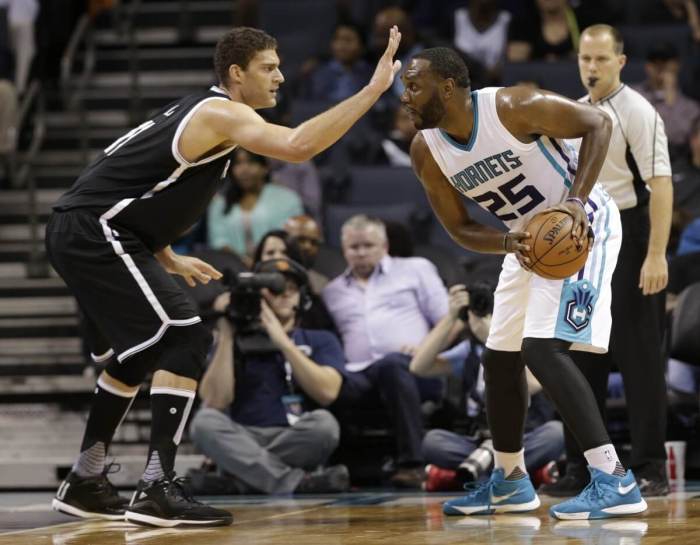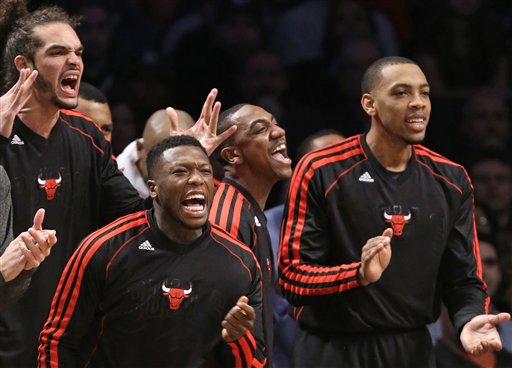
The NBA is a copycat league and every team is trying to find their own version of an undersized or stretch power forward.
Each decade or so there is a trend in the NBA, and the current one is to find the prototypical power forward that is athletic enough to defend all positions, stretch the court, and have a humongous wingspan.
The Golden State Warriors started this trend by winning a championship with Draymond Green at the 4 position.Next will be your 7-foot center blocking shots and hitting threes like Joel Embiid, Karl-Anthony Towns, and Kristaps Porzingis have started to do.
But, in the meantime, the Nets hope to have found their own new-age power forward in Rondae Hollis-Jefferson.
Hollis-Jefferson fits the mold with his body type as he is 6’7, around 220 pounds, and has a long wingspan of 7’2. Not to mention, he brings the defensive capabilities and athleticism of guarding multiple positions.
In 26 starts this season, Hollis-Jefferson is averaging 8.2 points, 5.7 rebounds, and 2.7 assists, while shooting .40% from the field — but most of that came after his long-awaited swap at the forward position.
This season is for development and Hollis-Jefferson seems to be getting more comfortable starting at power forward and has increased his averages in points (9.6), rebounds (7.5), and FG% (.54%) over his last 10 games. The sophomore is coming off an impressive double-double with 16 points and 10 rebounds against the Warriors, playing against Green, who can be considered the model for the new power forward position.
Trevor Booker, who will face off against his former team tonight, had started 43 games with averages of 9.8 points, 8.6 rebounds, and 26.6 minutes, all those being career-highs. Booker had always been a bench player during his roles with Washington and Utah, but was finding success as a starter. seems coming off the bench in Brooklyn has worked to his favor and given the Nets better production.
However, Atkinson, the ever-so-often rotation tweaker saw a new potential swap and since he started coming off the bench in Brooklyn, it seems to have worked out in everybody’s favor: Hollis-Jefferson is in a better position to succeed and Booker has still given the Nets great production with the scoring deficit second unit.
Booker has posted 12.5 points and 8.5 rebounds off the bench in 23.9 minutes.
One might ask, what has been the biggest difference and key to success in the switch?
To start, Booker’s energy is well-needed off the bench when the team may start off sluggish. Playing in the second unit also allows Booker to play at a faster pace, something Booker strives at.
In Hollis-Jefferson’s case, playing him at the 4 plays to his advantages as he isn’t a real threat from the perimeter, so he finds himself closer to the rim during offensive sets compared to being outside as a small forward. This also allows the Nets to have another shooter in the lineup to stretch the court and have the athletic Hollis-Jefferson slashing the lanes.
The switch has proven to be a positive defensively as Hollis-Jefferson has shown he can defend almost any position and any type of power forward from the 7’3 Kristaps Porzingis to the 6’7 Draymond Green. This can also be a mismatch on the offensive end as Hollis-Jefferson can bring the bigger 4’s out and take them to the basket off the dribble, finishing either with a dunk or a trip to the free throw line.
One reason for the success defensively is Hollis-Jefferson’s ability to switch onto the perimeter in the heavy dose of pick-and-rolls that NBA teams run. Not to mention, Hollis-Jefferson can put up strong rebounding numbers at the power forward position so the swap, despite Booker’s career numbers, has worked out ideally on both sides.
During a year like this, it’s all about trying out new and complex ideas and Atkinson has keyed in on this one. Despite the win-loss record, the Nets have seemed to figure out a plan for the new-aged NBA and his name is Rondae Hollis-Jefferson.



















